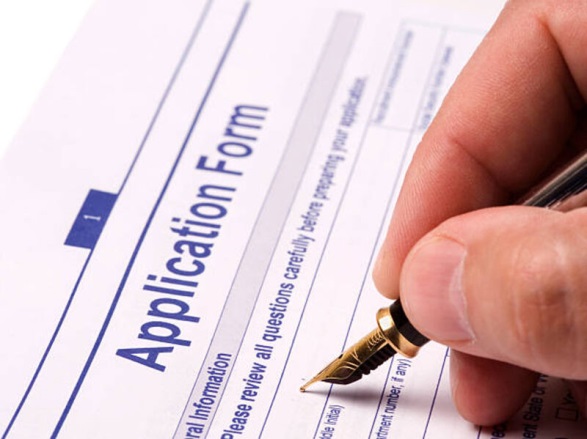Mortgage Qualification: Step-by-Step Process to Prequalify
Nov 29, 2023 By Triston Martin
Are you looking to purchase a new home, but aren't sure whether you'll be able to qualify for a mortgage? Navigating the complexities of prequalifying for a loan can be daunting – but it doesn't have to be! With this handy guide, we'll provide an easy-to-follow step-by-step process that will walk you through the entire process. Mortgage qualification does not need to feel overwhelming or out of reach – let's get started on the journey toward making your dream home a reality!
Overview of mortgage qualification

Before we dive into the step-by-step process, let's start with an overview of what mortgage qualification actually means. Put simply, mortgage qualification is the process of determining whether an individual or couple meets the financial requirements to purchase a home. This includes factors such as credit score, income, debt-to-income ratio, and employment history.
There are different types of loans available for homebuyers, and each loan has its own set of qualification criteria. Some loans, such as FHA loans, have more lenient requirements while others, like jumbo loans, may require a higher credit score and down payment. Understanding the specific requirements for the type of loan you are interested in is an important first step in the prequalification process.
Step 1: Self-Assessment
The first step in prequalifying for a mortgage is to take a look at your own financial situation. This includes assessing your credit score, calculating your debt-to-income ratio, and determining how much you can afford for a down payment.
Start by requesting a free credit report from one of the three major credit bureaus – Equifax, Experian, or TransUnion. Review your report for any errors or discrepancies that may be affecting your score and work on improving your credit if needed.
Lastly, decide on how much you can afford for a down payment. The standard recommendation is to put down 20% of the home's value, but some loans allow for lower down payments. Keep in mind that a higher down payment can result in a lower interest rate and overall savings in the long run.
Step 2: Choose a Mortgage Lender
Once you have a good understanding of your financial situation, it's time to choose a mortgage lender. This is an important step as the lender will ultimately be the one providing you with the loan.
Consider factors such as interest rates, loan types available, and customer service when selecting a lender. It's also important to shop around and compare offers from multiple lenders to ensure you are getting the best deal.
The role of a lender in prequalification
The lender's role in the prequalification process is to evaluate your financial standing and determine how much they are willing to lend you. They will review your credit score, debt-to-income ratio, employment history, and other financial information.
Be prepared to provide documentation such as pay stubs, tax returns, and bank statements to support your claims. The lender may also request a letter of explanation for any red flags in your financial history.
Step 3: Submission of Preliminary Information
After selecting a lender, you will need to submit some preliminary information to start the prequalification process. This may include personal information such as your name, address, and social security number, as well as financial information like bank statements and pay stubs.
The lender will use this information to prequalify you for a loan amount based on their specific criteria. Keep in mind that prequalification does not guarantee loan approval, but rather gives you an idea of how much you may be able to borrow.
Step 4: Formal Loan Application

If you are satisfied with the loan amount provided during prequalification and ready to move forward, the next step is to complete a formal loan application. This will involve providing more detailed financial information and documentation, as well as paying for a credit check.
Once the lender has all the necessary information, they will review your application and determine if you qualify for a mortgage. This decision is based on factors such as credit score, income, employment history, and debt-to-income ratio.
Step 5: Preapproval
If your loan application is approved, you will receive a preapproval letter from the lender. This will outline the loan amount you are approved for and any conditions that must be met before final approval is granted.
A preapproval letter is a valuable tool when house hunting as it shows sellers that you are a serious buyer with financing already in place. However, keep in mind that preapproval does not guarantee final approval and factors such as changes in your financial situation or the property appraisal can affect the final decision.
Next Steps after Prequalification
Congratulations, you have successfully prequalified for a mortgage! But the journey doesn't end here. Here are some important next steps to consider:
- Begin your home search: Armed with a preapproval letter and knowledge of how much you can afford, it's time to start looking for your dream home.
- Lock in interest rates: Speak with your lender about locking in an interest rate to protect against potential increases.
- Gather necessary documents: As you progress through the home buying process, there will be a lot of paperwork involved. Start gathering important documents such as tax returns and bank statements to make the process smoother.
- Continue improving your credit: Even if you have a good credit score, it's important to maintain or improve it during this time. This can help you secure a better interest rate and loan terms.
- Keep in touch with your lender: Communication is key during this process. Stay in touch with your lender and provide any information or documents they request promptly to keep the process moving smoothly.
Conclusion
Prequalification is an important first step in the mortgage process and can give you a better idea of how much home you can afford. Remember to do a self-assessment, choose a reputable lender, and be prepared to provide necessary information during preapproval. With this knowledge and preparation, you'll be on your way to becoming a homeowner in no time. Good luck!








